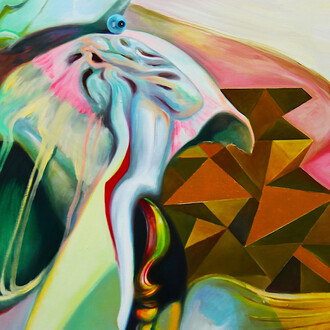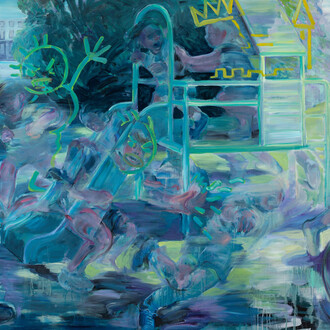The studio is an enlarged head. The images on the walls of the room and their movement stand in for the emergence and movement of thoughts in the head. The world is invited into the studio. There it is fragmented. The fragments are rearranged and sent back out into the world as a drawing, a performance, or a text.
(William Kentridge)
With A natural history of the studio, his first exhibition with Hauser & Wirth in New York, renowned South African artist William Kentridge will present his acclaimed episodic film series Self-portrait as a coffee-pot with more than seventy works on paper integral to its creation and an array of sculptures at 542 West 22nd Street. This immersive exhibition is the first ever to present all the drawings from this filmic masterpiece, hailed by critics as a moving, witty and ultimately wondrous synthesis of the personal and the political, the individual and the universal. Spanning two floors of the gallery’s 22nd Street building, A natural history of the studio also extends to the gallery’s 18th Street location with a concise survey of Kentridge’s printmaking practice.
Conceived by the artist’s longtime collaborator Sabine Theunissen, the installation design for the first floor of A natural history of the studio at 22nd Street will include the charcoal drawings used in the animation of Self- portrait as a coffee-pot and evoke the feeling of being in Kentridge’s working environment with him, a place where the walls hum with inspiration and every surface tells a story. Shot in his Johannesburg studio at the outset of the global COVID-19 pandemic and completed in 2024, the series includes nine thirty-minute episodes that bring viewers inside the artist’s mind.
Through a blend of Kentridge’s signature stop-motion technique, live action performance and philosophical dialogue, Self-portrait as a coffee-pot delves into subjects like Greek mythology, the history of mining in Johannesburg, colonialism in Africa and Soviet absurdities. And here, as in his wider body of work, the seemingly mundane and familiar household coffee pot becomes a stand-in for the artist, an avatar of the art-making process in which a steady flow of ideas is akin to the bubbling of coffee brewing. In several episodes of the series, Kentridge is joined by collaborators and assistants; in others he is seen debating and squabbling with a series of doppelgängers in a playful externalization of his internal creative struggles. Thus, Self-portrait as a coffee-pot serves as both a celebration of creativity and a snapshot of Kentridge’s pandemic experience.
The second floor of the exhibition will explore the relationship between drawing and sculpture in Kentridge’s oeuvre. Among works on view here will be a selection of Paper procession sculptures. Made from aluminum panels fixed to a steel armature and hand-painted in vibrant oil paint, these works are based on a series of small-scale paper sculptures Kentridge made from pages of a 19th-century accounting journal from the Chiesa di San Francesco Saverio in Palermo, Italy. The works feel like moving sketches—ephemeral yet powerful—and extend Kentridge’s exploration of history, memory and transformation using humble materials to challenge grand narratives.
Glyphs also make an appearance in the single channel animated video on view titled Fugitive words (2024). The film opens with an overhead view of Kentridge’s hands flipping through the pages of one his many notebooks—a vital part of his creative process and an extension of his studio—where sketches, scores, diagrams, lists and phrases appear. The scene quickly develops into a dreamlike, non-narrative journey through the artist’s mind, where fleeting words, shifting images and even his drawing tools come to life to create an evolving landscape of memory and transformation, all set to Beethoven’s Archduke piano trio.
The presentation will also include Kentridge’s bronze ‘glyphs’—sculptures of both everyday and arcane objects, words and icons that function together as a sort of visual glossary that can be arranged and re-arranged to construct different sculptural ‘sentences.’
















